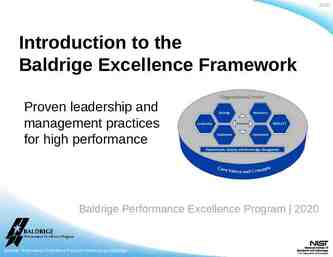PROJECT ON EFFECTIVE DEMAND
27 Slides1.94 MB
PROJECT ON EFFECTIVE DEMAND
definition Effective demand means., the value of aggregate demand at the point of aggregate demand function where it is intersected by aggregate supply function. (Lord Keynes) Prof. Dillard considers the principal of effective demand to be “logical starting point of keynesian theory of employment.”
h At different level of employment, aggregate demand can also be different, but there is a level of aggregate demand at which it is equal to aggregate supply. According to Keynes's theory of employment, the level of employment depends upon that level of aggregate demand at which it is equal to aggregate supply. This position is known as equilibrium position.
EXPLANATION OF THE THEORY Aggregate demand of an economy tells us to how much money is expected to be received by all the entrepreneurs by selling the output produced at different level of output. So in this way, Aggregate demand represents aggregate expenditure. Aggregate supply tells us to how much money must be received by all the entrepreneurs of an economy by selling their output produced at different level of output. In this way aggregate supply represents aggregate production cost.
t When entrepreneur makes more investment there is increase in aggregate supply. Increase in aggregate supply leads to increase in the volume of employment. Increased volume of employment leads to increase in the aggregate demand. Position of equilibrium between aggregate demand and aggregate supply signifies effective demand.
diagram of effective demand IN FIGURE Level of employment is shown on OX-axis and receipts on OY-axis. AS is aggregate supply and AD is aggregate demand curve. AD and AS curves intersect each other at point E. Thus point E indicates the level of employment that will finally be determined. Supposing, aggregate supply is equal to AN. In this situation, ON no. of labourers will get employment. At ON level of employment, A.D. will be ND . In this way by employing ON no. of labourers, the entrepreneurs will receive ND amount of money and spend AN amount by way of cost of production. Thus, they will receive AD amount as surplus. It means that entrepreneurs will receive more money than their expectations. They will therefore increase their production. The entrepreneurs will go on employing more and more labourers till they reach equilibrium position as shown by E.
continued In this position aggregate demand will be equal to aggregate supply. If the entrepreneurs employ more than OM labourers. i.e., OQ labourers, then aggregate demand will be less than (CQ) aggregate supply (BQ). In this case, the entrepreneurs will not be able to sell all their output. Fall in sale of output will force the entrepreneurs to reduce employment to the extent that the level of equilibrium i.e., OM is re-established.
DETERMINANTS OF EFFECTIVE DEMAND AGGR EGATE DEMA ND AGGE GATE SUPP LY
Aggregate demand 1. Aggregate Demand price 2. Aggregate demand schedule or Aggregate demand function 1. Aggregate demand price Aggregate demand price refers to the total amount which all the producers expect to receive by selling the output produced at a given level of employment. Definitions The aggregate demand price at any level of employment is the amount of money which all the entrepreneurs in an economy taken together really do expect that they will receive if they sell the output produced by this given no. of men. Stonier and Hague
2. Aggregate demand schedule The schedule showing relation between employment and expected prices is called aggregate demand schedule. Definition Aggregate Demand Function is a schedule of the various amounts of money which the entrepreneurs in an economy expect from the sale of their output at varying levels of employment . Peterson AD f(N)
Aggregate demand schedule Level of employment (in lakh) 0 10 20 30 40 50 50 Aggregate demand price (in crore) 100 360 420 480 540 600 640
Aggregate demand curve Aggregate demand curve is a curve that expresses relationship between aggregate demand price and employment.
Determinants of Aggregate Demand 1. Consumptionexpenditure 2. Investmentexpenditure AD C I
h Aggregate supply AGGREGATE SUPPLY PRICE AGGREGATE SUPPLY SCHEDULE
n (A) Aggregate supply price Aggregate supply price refers to that minimum amount of money which all the entrepreneurs have to spend in order to produce the output at a given level of employment, in other words, it is cost of production. Definitions Aggregate Supply price of the output of a given amount of employment is the expectation of proceeds which will just make it worthwhile for the entrepreneurs to give that employment. Keynes
j (B) Aggregate supply schedule or Aggregate supply function Aggregate supply function is a schedule of various amounts of money which all the entrepreneurs in an economy must receive from the sale of output at varying levels of employment. Definition The Aggregate supply function is a schedule of the minimum amount of proceeds required to induce varying quantities of employment. AS f(N)
Aggregate supply schedule Level of Employment (lakhs) Aggregate Supply price (crore Rs) 0 0 10 120 20 240 30 360 40 480 50 600 50 720
(C) AGGREGATE SUPPLY CURVE Aggregate supply curve is a curve that expresses relationship between aggregate supply price and the level of employment.
Determination of Effective Demand In an economy, Effective demand depends of two factors: 1.Aggregate demand price and 2.Aggregate supply price The level of employment at which aggregate demand becomes equal to aggregate supply (AD AS )is called equilibrium level. It is at this level of equilibrium that effective demand is determined.
Determination of effective demand Employment (in lakhs) Aggregate Demand (in crore) Aggregate Supply (in crore) Equilibrium 0 100 0 Disequilibrium 10 360 120 AD AS 20 420 240 AD AS 30 480 360 AD AS 40 540 480 AD AS 50 600 600 Effective demand 50 640 720 AD AS Above table indicates that when level of employment is 50 lakhs ,then both aggregate demand and aggregate supply are equal at Rs. 600 crore. It is an equilibrium situation. The aggregate demand under this situation is called effective demand.
b In figure, employment is shown on OX-axis and expected receipts on OY-axis. AD is aggregate demand curve and AS is aggregate supply curve. Both intersect each other at point E. Aggregate demand at point E will be called Effective demand. Point E is equilibri-um point. Point E shows that in equi-Librium position, level of employme-nt is OQ and expec-ted receipts OP.
Equilibrium not necessarily at full employment .
Explanation Equilibrium need not coincide with full employment. It can be possible even under less than employment. It is shown in the figure. AS is aggregate supply curve and AD, AD1, and AD2 are different aggregate demand curves. When aggregate demand is AD, then equilibrium is at point E. It signifies under employment equilibrium. Economy will have full employment equilibrium only when OQ1 no. of labourers
Importance of Effective Demand 1.Discarding Say’s law 2.Refuting of Pigou’s Theory of wages 3.Importance of investment 4.Paradox of poverty 5.Level of employment 6.Under employment equilibrium
CRITICISM OF EFFECTIVE DEMAND 1. Doubtful theory 2. Effective demand is also expected demand 3. No complete relationship among effective demand, income, and employment. 4. Non-applicability to under-developed economies 5. Narrow concept
m Thank you
































